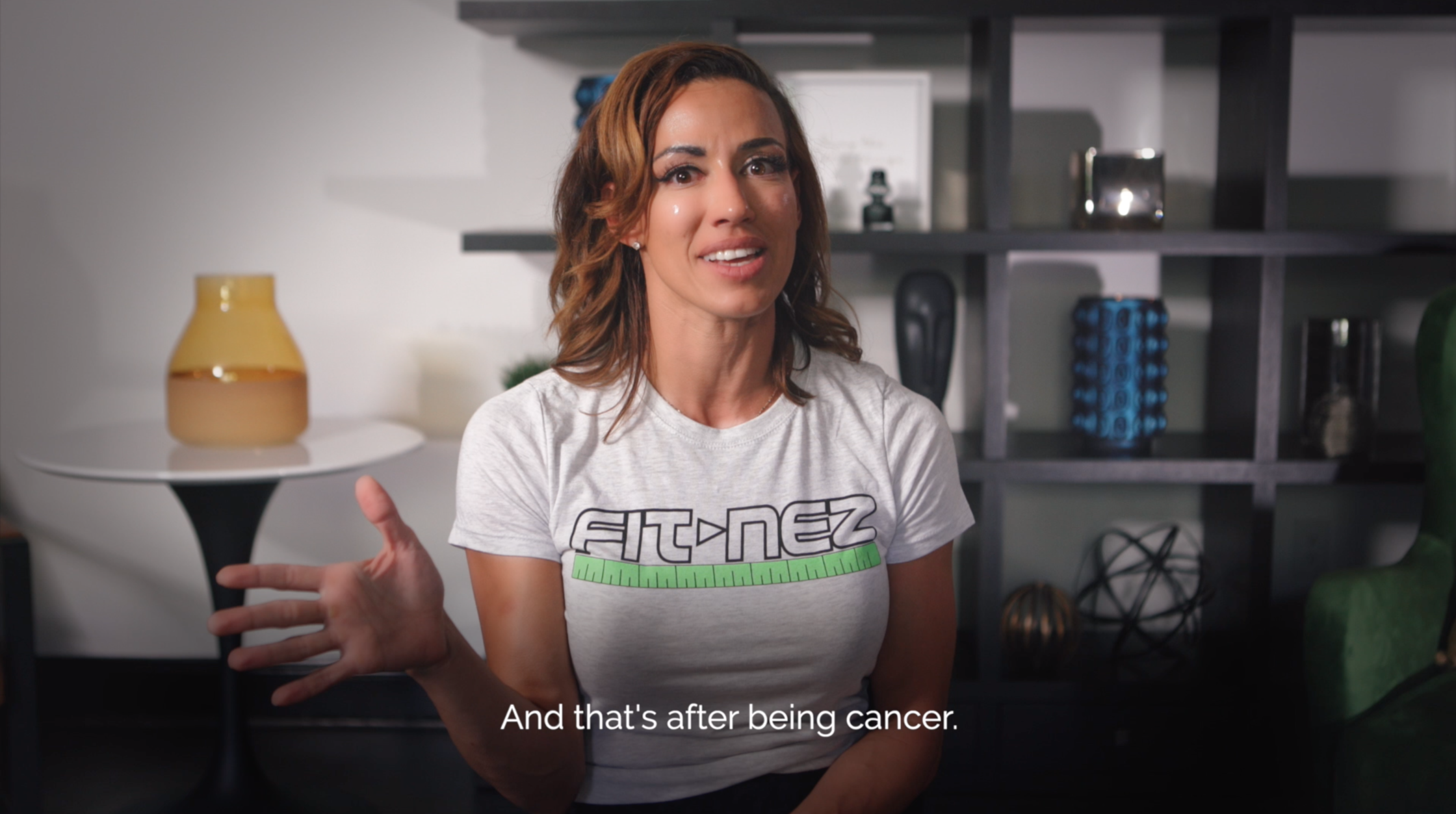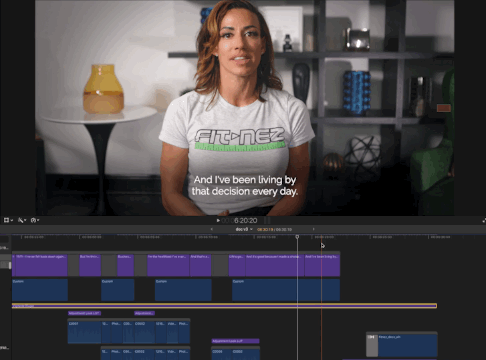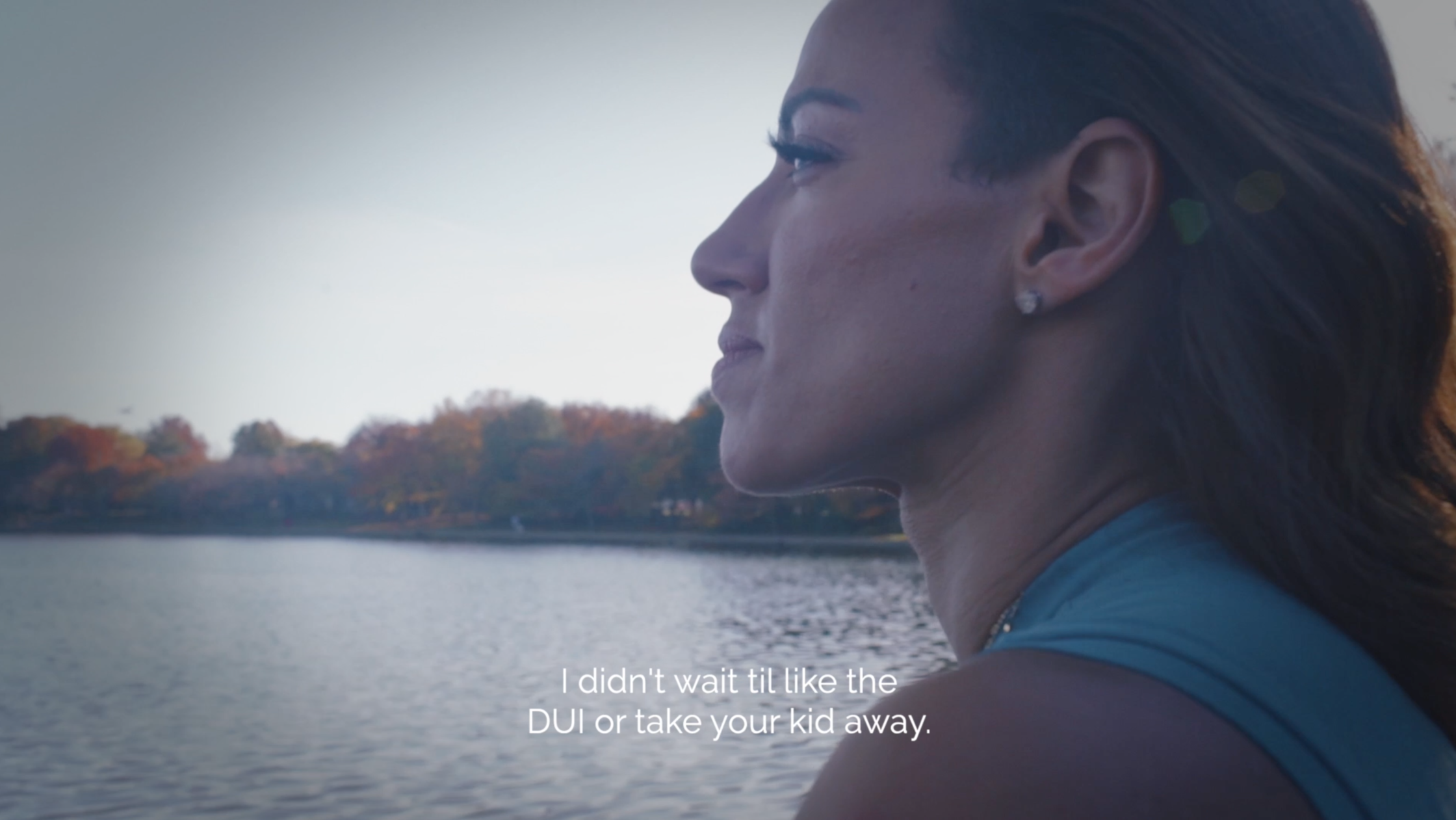Making people cry is part of the job
Once or twice a year I get asked to make a documentary that really pushes me to the limit.
Inez has been one of my best clients and supporters, so when she asked me to capture her story I jumped at the opportunity.
She wanted a documentary to commemorate her 1 year sobriety anniversary on 11/11. It took some late nights leading up to that date to meet the deadline, but I did it!
Take a look:
Watching her share this story with the world over the last few days has been amazing. Thousands of views, hundreds of comments across social media.




Here are a few thoughts about the process.
The Interview
Like all interviews I do these days, I shot it to-the-camera using the Eyedirect system.

We filmed in the community room of her apartment building. This interview was about 50 minutes long. I used Descript to generate the transcript which helps me quickly identify and narrow down usable sound bites. These usable clips ended up around 16 minutes. From there I cut it down to the final 6:30.
At first I expected this video to be in the 3-4 minute range like a typical documentary, but once I started working on it I was fine having this go longer.
Even with this longer edit there were still really good and usable segments about her AA sponsor, sober coaching, having a support system, etc but I'm happy with where it ended up.
Small details for video producers
I put a subtle vignette on the entire video. You can see this as a title layer between the footage and the captions. Here's a quick on/off:

Just a subtle way of drawing the viewer into the center of the screen, especially with the composition - she's in the middle of the frame looking forward. I used a vignette plugin from FCPeffects. I'm surprised there's not a better tool out of the box within FCPX.
I'm also using FCPeffects's Skin Smoother tool to take off some of the shine on the interview shot. It works really well and you don't need to tweak too many settings once you choose the correct skin tone.
White is the traditional color for captions. But if there's white behind the words (like Inez's white t-shirt) they may be hard to read.
To fix this, add a solid black box behind the words. Bring down the opacity to 30-50% and add a feather to create a gradient effect. Here's the on/off for that:

I much prefer this to a drop shadow or outline on the words themselves because it's super subtle and you wouldn't even notice it if I didn't show you the on/off. I had this solid on for most of the video.
In addition to old photos we needed some b-roll so we were able to get together for an hour on the National Mall in downtown Washington, DC. The fall colors were perfectly for this story that centers on November 11th.
We filmed near the Reflecting Pool and the Tidal Basin which was perfect because I needed some reflective looking shots to help with transitions.

I used my Sony a7sII with an old manual focus Nikon 35mm AIS lens at f/8 with ND filter. I put the camera on my Ronin S handheld gimbal and filmed at 60fps. Everything was shot at 5600K white balance and my preferred CINE-4 color profile.
I love making people cry
When she first watched the rough cut, Inez was walking in New York and pulled it up on her phone. She called me as soon as she watched it.
I can still hear the "Wow, Patrick.." She definitely let a few tears go before calling me. Making people cry is a weird speciality but I don't take it lightly. That's how I know I did a good job!
While I'm really focused on doing simpler productized video services these days, my background is in documentaries. I've probably created around 100 documentaries like this between 2012 and 2020.
It's really nice to create one every once in a while. Some of my best work is documentaries and I'm grateful to be able to keep making them!